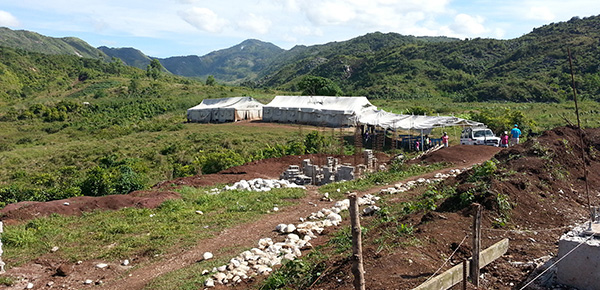- The 2010 Haiti Earthquake, Part 1
- The 2010 Haiti Earthquake, Part 2
- Miyamoto in Haiti: The Presidential Palace, A Fractured Haitian Icon
- Miyamoto in Haiti: Damage Assessment of the Japanese Embassy
- Miyamoto in Haiti: The Well-Oiled Relief Machine Rolling Through Haiti
- Miyamoto in Haiti: Inside a Heavily Damaged Building
- Miyamoto in Haiti: Visiting The Citadel
- Thirty Months in Haiti, Part 1
- Thirty Months in Haiti, Part 2
- Thirty Months in Haiti, Part 3
- Miyamoto in Haiti: A Morning and Afternoon of Hopeful Rebuilding
- Miyamoto in Haiti: School Rebuilding and Construction Continues
- Trente mois en Haïti, 1eme partie
- Trente mois en Haïti, 2eme partie
- Trente mois en Haïti, 3eme partie
- Miyamoto in Haiti: Visiting a Remote School Construction Site Near Cap-Haïtien
- Miyamoto in Haiti: Self-Sustaining Relief
- Miyamoto in Haiti: Love it or Hate it? Love it!
- Miyamoto in Haiti: Lycee de Cite Soleil Rehabilitation Project
- Miyamoto in Haiti: The Hopeful Road to Recovery
- A Day in the Haiti Disaster Zone
- Kidnappers & Disaster
- A Disaster Week in Haiti
The 7.0-magnitude 2010 earthquake that devastated Haiti, killing more than 300,000 and destroying 280,000 buildings, also left many children without schools. Days later, Miyamoto International arrived in Haiti to help, ultimately creating Miyamoto Global Disaster Relief, a nonprofit to provide disaster mitigation and reconstruction following catastrophic disasters where usual funding source doesn’t exist.

Miyamoto International trained legions of engineers and masons (pictured) to rebuild and retrofit schools, homes and buildings so they will withstand future earthquakes. As Miyamoto International CEO Dr. Kit Miyamoto points out, “Earthquakes don’t kill people. Buildings kill people.” To date, we have trained more than 6,000 masons, along with 600 engineers and 20 contractors.

Miyamoto International is in the process of rebuilding 34 schools leveled or heavily damaged by the earthquake, including Ecole Nationale de Catiche, a partnership with UNICEF.

The Miyamoto truck arrives at the school site from Port-au-Prince after two days of driving and four-wheeling to get there. Other sites are accessible only on foot, including three hours of hiking uphill. “Nothing stops these Haitian masons,” Kit Miyamoto says.
Seeing children like these and wanting to improve their lives is part of what drives Miyamoto International in its mission to make the world a better place. “I love Haitian kids,” Kit Miyamoto says. “They are so beautiful and friendly, but most have absolutely nothing. Amazing how much my kids have in comparison and sometimes they want more. I am determined to bring them here someday.”
Kit Miyamoto and the team go over the plan of action with the local contractor (striped shirt). The man to Kit’s right is a Haitian site engineer who has worked with Miyamoto International for several years now.
Masons build the foundation using traditional materials like these large rocks, a component that works well in Haitian construction.
Miyamoto Project Manager Karyne Raymond and a site engineer check the foundation of the new school to make sure everything is right.

Kit Miyamoto goes over school construction plans with a UNICEF staffer. Kit was heartbroken to see structurally unsafe schools reopen in Haiti shortly after the quake. He was haunted by the knowledge they would not withstand another significant earthquake and vowed to do something about it.
The construction team looks over plans.
UNICEF Country Director Edouard Beigbeder listens as the team shares a light moment. On the left is Project Manager Karyne Raymond, who is leading Miyamoto’s school rebuilding efforts in Haiti.
Miyamoto’s Sabine Kast visits the site. Sabine spearheaded a conference that raised more than $100,000 for Miyamoto Global Disaster Relief. The nonprofit currently focuses on rebuilding dangerous schools in Haiti so Haitian schoolchildren can obtain an education without risking their lives to do so.
A peek inside a temporary school in Southern Haiti where a new school is under construction. “Haitian children are among the poorest economically in the world, but they are so fun and have beautiful spirits,” Kit Miyamoto said. “This is true everywhere in Haiti. Education here is sacred. That impresses me.”











